Satellite Takes Maritime Communication into Space

The future of maritime communication is here. VDES provides up to 32 times more bandwidth than today’s AIS system and also enables two-way communication with satellites. In a project funded by the Swedish Transport Administration, VDES transponders, both on land and at sea, have now successfully communicated with a Swedish test satellite.
In the late 1990s, transponder technology AIS was developed to improve safety at sea. With Sweden and the Swedish Maritime Administration as key drivers, it quickly became an international standard, and since 2002, it has been a requirement that all ships over 300 gross tons, which are commercial vessels under the SOLAS convention (passenger ships, tankers, container ships), must have AIS installed.
Although AIS has been a successful solution, the technology has reached its capacity limits. In high-traffic waters, bandwidth is insufficient, creating a need for a new solution. As a result, the maritime industry has spent several years working to develop a new global standard – VDES (VHF Data Exchange System). At Saab, they have been working with the technology for five years in the VDES demonstration project aboard a 3U nano-satellite funded by the Swedish Transport Administration.
"VDES is not just about increasing bandwidth and acquiring new frequencies; it also enables two-way communication globally. At Saab, we have long developed ship transponders and base stations for AIS. Now, we’ve taken the technology to space and created a “flying base station.” This allows communication beyond the horizon, reaching vessels at extremely long distances", says Andreas Fredmer, project manager at Saab.
In the five-year project, they developed a space platform in the form of a 3U nanosatellite, with a volume of 3 cubic decimeters – about the size of a milk carton. In November 2023, the satellite was launched into space and placed into orbit around the Earth.
"We started by conducting tests for AIS reception. Transponders around the world sent signals so we could confirm that one-way communication worked. After that, we sent signals on the new VDES frequencies from the satellite to our base station in Linköping. Even vessels, such as the Stena Germanica, participated in the tests."
The tests went well, met all objectives, and showed that VDES technology will bring important improvements for maritime traffic safety and navigation support. For example, it opens up opportunities for route optimization, which could lead to significant fuel savings.
"We were also able to test different types of services available in the IMO standard. The idea behind this was to show that the system could be used with the satellite as a testbed, says Andreas Fredmer:"
He continues:
"We conducted a test for navigation warnings, where a warning message was sent from the satellite to several recipients, including Stena Germanica. The idea is that a vessel should be able to receive warnings even when it is out of range of coastal signals. The test demonstrated how the satellite system can effectively transfer important navigation information to vessels in real-time."
VDES systems can also receive AIS signals, which means that the transition to new frequencies and services will be easy. So, when can VDES be seriously established on the market?
"In May, the IMO will decide whether VDES can be introduced as an alternative to AIS and eventually become mandatory in the longer term. For ships, VDES transponders already exist, but for the space component, VDES transponders are still in a demonstration phase, and they need to be adapted before mass production can begin. To achieve global coverage, between 24 and 100 satellites will be needed", says Andreas Fredmer.
-
 NextWave – en podd som ska locka unga
NextWave – en podd som ska locka unga -
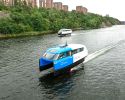 Ny studie: Eldrivna pendelbåtar kan effektivisera Stockholms kollektivtrafik
Ny studie: Eldrivna pendelbåtar kan effektivisera Stockholms kollektivtrafik -
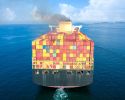 Sjöfartens utsläpp ökar
Sjöfartens utsläpp ökar -
 Sociala relationer påverkar val av bränsle
Sociala relationer påverkar val av bränsle -
 Sjöfartens omställning kräver ”mjukare” påtryckningar
Sjöfartens omställning kräver ”mjukare” påtryckningar -
 Hon hade avtalad tid med Kapten ynkrygg
Hon hade avtalad tid med Kapten ynkrygg -
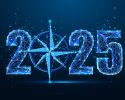 Lighthouse omvärldsanalys 2025 – osäkerhet och tullar präglar sjöfarten
Lighthouse omvärldsanalys 2025 – osäkerhet och tullar präglar sjöfarten -
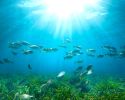 Se seminariet Shipping in the Marine Environment
Se seminariet Shipping in the Marine Environment -
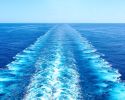 Vad betyder egentligen de 90 procenten?
Vad betyder egentligen de 90 procenten? -
 Hålla där...
Hålla där...

